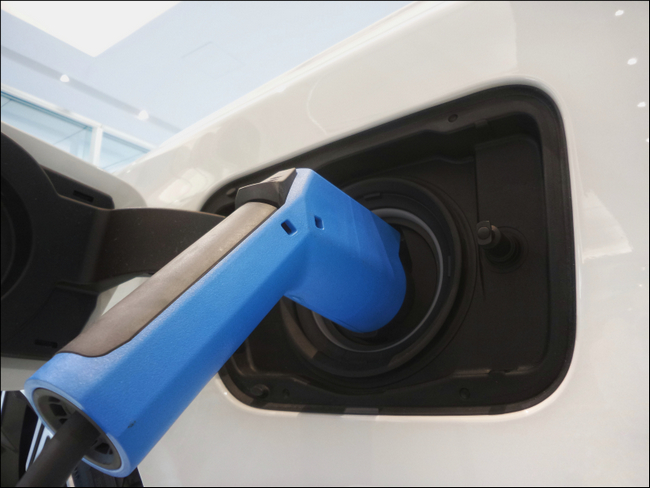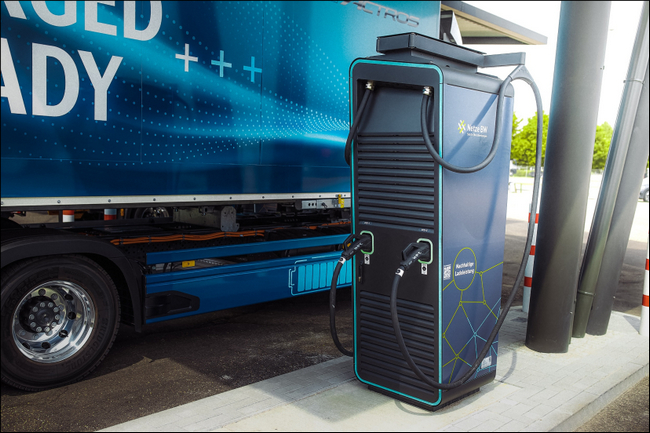Displaying items by tag: pailton engineering
Getting start ups started
~ Design flexibility is key to helping start ups get going ~
In early 2023, Britishvolt, a UK startup, filed for administration after struggling to raise funds for a major electric vehicle (EV) battery factory in northern England. The episode is classed as another damning blow to the UK’s hopes of building a home-grown battery industry, with the country falling further behind in the global race to build batteries. Here, Roger Brereton, Head of Sales at steering parts manufacturer Pailton Engineering, explores the reasons why start ups often struggle to bring vehicles to market.
According to the Faraday Institution, a clean mobility research group, the UK will need to build five gigafactories by 2030 to supply around 100 GWh needed to satisfy the depend for batteries for private cars, commercial vehicles, heavy goods vehicles, buses, micromobility and grid storage. By 2040, it will need ten. As of writing, only one factory is being built, and that’s by Chinese multinational Envision to serve Nissan's car plant in Sunderland.
However, we are seeing many commercial EV makers struggle financially when kickstarting cell factory projects across the country. Despite a series of business changes and internal restructurings, high profile EV start ups are either on track to go bust this year or have already significantly cut down on production, owing to dwindling cash reserves and high costs related to production ramp-ups and soaring inflation.
Stuck in neutral
A contributing factor as to why commercial EV start ups are struggling is in relation to the price of raw materials, such as lithium, which is used to store and provide the electrical energy needed to power the electric drivetrain of trucks and buses.
The Russian war on Ukraine has disrupted oil, natural gas and coal supply chains, exacerbating tightness across metal markets and heating up prices for nickel, steel, aluminum, copper and a host of other materials critical to EV manufacturing. As a result, EV makers now face problems securing metals essential to the batteries that power the cars.
In fact, according to Benchmark Mineral Intelligence, its lithium price index had risen by 182.6 per cent year-on-year as of mid-December 2022, meaning that cleaning the world from polluting energy sources is becoming much more expensive.
Semiconductors shortage
Just one vehicle could have thousands of different semiconductors, depending on how advanced and expensive it is. Semiconductors are essential in every EV, be it for infotainment systems or the more basic parts, such as power steering and brakes. The current shortage, which started in 2020, was caused by many factors that include an already disrupted supply chain, geopolitical incidents between the US and China and the fact that major producers paused production at the beginning of the COVID-19 pandemic. Automotive manufacturers cut their orders of all parts and materials, including semiconductors, but the demand rebounded shortly after, leaving them with insufficient stocks.
Many EV companies were unable to carry on with assembly and could not come back to it when a fresh shipment arrived. In fact, well-known automakers had to halt certain production lines in their factories, including General Motors, Ford Motors, Nissan, Toyota, Volkswagen, Subaru and Fiat Chrysler.
Lacking in design flexibility
When planning to build electric buses and trucks, many of the EV commercial vehicle manufacturers turn to off-the-shelf parts or use their own designs and software.
The issue with off-the-shelf parts is that, despite being readily available, they are mass-produced and made to be versatile and compatible with various applications, meaning that they may not always seamlessly integrate into a specific electric truck or bus design.
Let’s suppose an EV manufacturer is developing a specialised electric delivery truck that requires a unique cabin layout. It would be wise for them to partner with a custom parts manufacturer to expedite the development timeline, especially during a time in which many EV start ups are financially struggling.
From needing to bring vehicles to market more quickly, to adapting more easily to the changing market conditions, start ups can support their process of getting started by looking at design flexibility.
Pailton Engineering designs and manufactures custom steering parts for heavy vehicles, included commercial vehicles and last mile delivery vans. Discover more at pailton.com.
About Pailton Engineering: Pailton Engineering Ltd design, test and deliver world class steering systems, using state of the art CAD (Solid Works), purpose designed and built test facilities, and state of the art manufacturing capability.
Don’t forget commercial vehicles
Research by the RAC has revealed that the government is unlikely to meet its target of having six or more rapid or ultra-rapid electric vehicle chargers at every motorway service area in England by the end of 2023. So how does the land lie for the much larger, heavy-duty commercial vehicles that require infrastructure for high-power charging stations? Here, Roger Brereton, Head of Sales at steering system specialist at Pailton Engineering, discusses how to implement infrastructure more quickly.
~ It’s not only cars that require sufficient electrification infrastructure ~
ACEA, the European Automobile Manufacturers’ Association, estimates that trucks in the EU27 + UK region will need 10,000 – 15,000 higher power public and destination charging points by 2025, and 40,000 – 50,000 by 2030. By this latter date, ACEA also estimates that there should be 40,000 lower-power public overnight chargers at truck parking areas.
The need for these charging stations is reinforced by the fact that approximately 40,000 battery electric medium and heavy‐duty vehicles will be in operation in Europe in 2025. This figure is expected to rise to 270,000 by 2030.

Unfortunately, the infrastructure that is required to charge these larger electric vehicles is almost nonexistent today. This is despite a new law agreed by the European Union promising that 3,600 kW of truck charging capacity every 60 km will be installed along the EU’s primary motorways by 2030.
Unlike cars, commercial vehicles such as buses and trucks cannot use the existing infrastructure. Instead, dedicated high-power charging stations, commonly known as direct current (DC) fast chargers or superchargers, are needed to deliver high-voltage DC directly to the vehicle's battery.
Speeding up infrastructure implementation
As ACEA argues, the shortage of commercial vehicle infrastructure must be tackled urgently, with policymakers needing to take action to ensure a rapid infrastructure roll‐out.
The plan is to ensure adequate public charging by 2030. The Alternative Fuel Infrastructure Regulation (AFIR), a part of the EU’s “Fit for 55” regulatory action to make EU policies fit for reducing net greenhouse gas emissions by 55 per cent by 2030, states that there will be four charging stations in each designated safe and secure truck parking area.
Although it could be argued that the regulation has not gone far or fast enough, it must be acknowledged that it does provide manufacturers with a useful basis for their infrastructure roadmaps.

Bridging the gap
Due to the current rate of installation, heavy-duty original equipment manufacturers (OEMs) cannot wait for the charging challenge to solve itself. As result, companies should undertake a proactive study of their customers’ charging requirements, evaluate potential business models for strategic fit and then create an implementation roadmap for their chosen model.
Of course, customers will not obtain true peace of mind until charging anxieties are resolved. Fortunately, this risk can be somewhat accommodated for, by using route planning and battery monitoring services in the context of adequate charging infrastructure.
These monitoring services can provide real-time information about the availability and speed of charging stations along the planned route. This data can also be integrated into the route planning service, allowing drivers and fleet managers to make informed decisions about where to charge, helping to minimise wait times and optimise charging schedules.
With that said, the infrastructure that is required to charge these larger, heavy-duty electric vehicles is almost nonexistent, but there are policies in place to counteract this issue.
For charging stations in each designated safe and secure truck parking area to be installed by 2030, a rapid rollout needs to happen fast. Until now, it seems that the infrastructure for these larger vehicles has been somewhat ignored in the transition to e-mobility.
For more information about Pailton Engineering’s custom engineering for commercial vehicles, visit the www.pailton.com or call +44 (0)2476 680445.
About Pailton Engineering: Pailton Engineering Ltd design, test and deliver world class steering systems, using state of the art CAD (Solid Works), purpose designed and built test facilities, and state of the art manufacturing capability.
